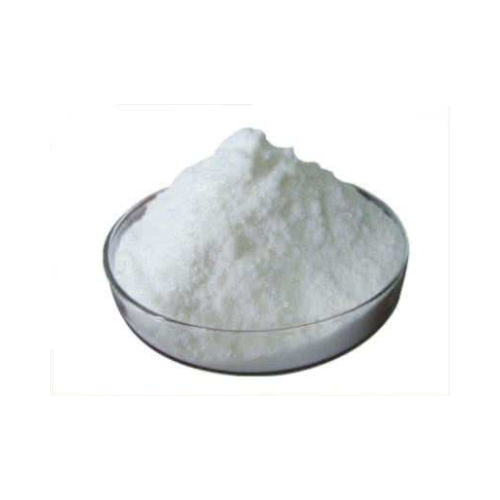Sodium azide is also used in the preparation of various chemicals; in agriculture, as a preservative and as a microorganism fumigant; in clinical and research laboratories; in sponge rubber; in detonators; and as an intermediate in explosives manufacturing. Exposure to sodium azide can be fatal.
- IUPAC Name: Sodium azide
- Chemical Formula: NaN₃
- Molecular Weight: Approximately 65.01 g/mol
- Appearance: White, crystalline solid.
- Odor: Odorless.
- Melting Point: Decomposes at around 275°C (527°F).
- Solubility: Soluble in water (approximately 35 g/100 mL at 25°C).
- Toxicity: Sodium azide is highly toxic and poses serious health risks. Ingestion, inhalation, or skin contact can lead to severe poisoning. It is also a potent carcinogen and can cause explosive reactions under certain conditions.
- Storage: Store in a cool, dry place away from heat and incompatible substances, such as acids and heavy metals, which can react with sodium azide.
- Sodium azide (NaN₃) is a chemical compound with notable applications in various fields, including chemistry, medicine, and industry. Here’s a comprehensive overview of sodium azide
Sihauli Chemicals is one of the leading Sodium Azide Manufacturer and Exporter form India. Sihauli Chemicals Supply Sodium Azide to Asia, Africa, Europe, North & South America and Oceania.
Our Global Presense:
Asia: Bangladesh, Burma (Myanmar), China, Hong Kong (UK), Indonesia, Iran, Israel, Japan, Jordan, Kampuchea (Cambodia), Kuwait, Laos, Lebanon, Macao (Portuguese), Malaysia, Maldives, Mongolia, Nepal, Oman, Philippines, Qatar, Saudi Arabia, Singapore, South Korea, Sri Lanka, Taiwan, Thailand, Turkey, United Arab Emirates, Vietnam.
Europe: Albania, Andorra, Austria, Belgium, Bulgaria, Cyprus, Czechoslovakia, Denmark, Finland, France, German Democratic Republic, Gibraltar, Greece, Hungary, Iceland, Ireland, Italy, Liechtenstein, Luxembourg, Malta, Monaco, Netherlands, Norway, Poland, Portugal, Romania, San Marino, Spain, Sweden, Switzerland, United Kingdom, U.S.S.R., Yugoslavia. Africa: Algeria, Angola, Egypt, Ethiopia, Gabon, Ghana, Kenya, Liberia, Libya, Madagascar, Mauritius, Morocco, Mozambique, Namibia, Nigeria, Reunion (France), Seychelles, Somalia, South Africa, Sudan, Tanzania, Tunisia, Uganda, Zambia, Zimbabwe.
North America: Bahamas, Barbados, Bermuda, British Virgin Islands, Canada, Costa Rica, Cuba, Dominica, El Salvador, Greenland (Denmark), Grenada, Guatemala, Haiti, Honduras, Jamaica, Martinique, Mexico, Montserrat, Nicaragua, Panama, Puerto Rico (USA), St. Vincent & the Grenadines, Trinidad & Tobago, USA, Virgin Islands.
South America: Argentina, Bolivia, Brazil, Chile, Colombia, Ecuador, French Guiana, Guyana, Paraguay, Peru, Venezuela.
Oceania: Australia, New Zealand, Solomon Islands, Wallis & Futuna Islands (France).
Sodium Azide
Brand REPACK Purity 98+% Grade TECHNICAL Usage/Application NO Physical State Powder CERTIFICATE OF ANALYSIS
PRODUCT NAME:SODIUM AZIDECAS NO:26628-22-8
FORMULA:NaN3
MOLAR MASS:65.0099 g/mol
APPERANCE:colorless to white solid
DENSITY:1.846 g/cm3INFORMATION OF SODIUM ACID:Sodium azide is the inorganic compound with the formula NaN3. This colorless salt is the gas-forming component in many car airbag systems. It is used for the preparation of other azide compounds. It is an ionic substance, is highly soluble in water, and is very acutely toxic.
SAFTY:Sodium azide has caused deaths for decades. It is a severe poison. It may be fatal in contact with skin or if swallowed. Even minute amounts can cause symptoms. The toxicity of this compound is comparable to that of soluble alkali cyanides and the lethal dose for an adult human is about 0.7 grams. No toxicity has been reported from spent airbags.
Azide inhibits cytochrome oxidase by binding irreversibly to the heme cofactor in a process similar to the action of carbon monoxide. Sodium azide particularly affects organs that undergo high rates of respiration, such as the heart and the brain.
It produces extrapyramidal symptoms with necrosis of the cerebral cortex, cerebellum, and basal ganglia. Toxicity may also include hypotension, blindness and hepaticnecrosis. Sodium azide increases cyclic GMP levels in brain and liver by activation of guanylate cyclase.






.jpg)
















